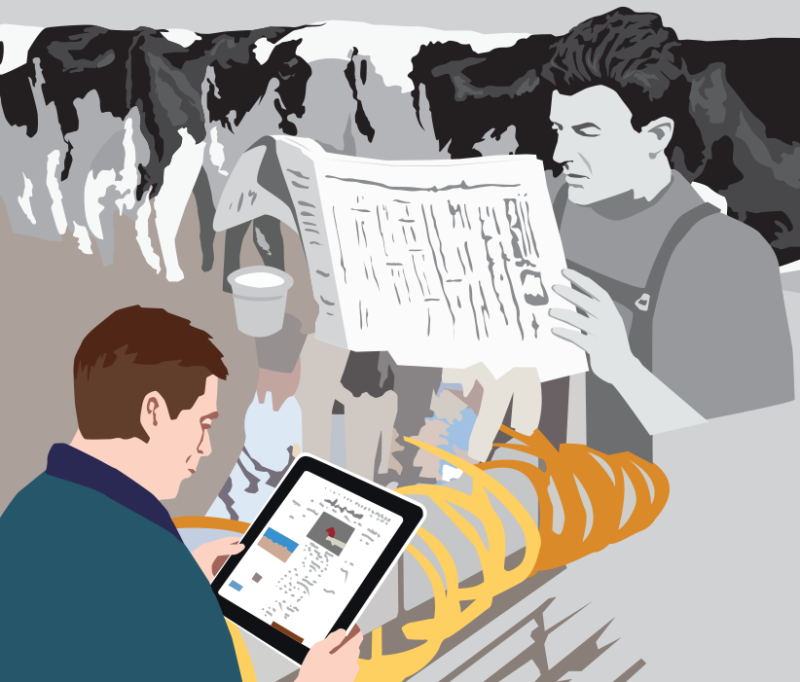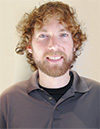In 2002, we were excited in western New York for the release of the movie Signs. It contained a few aerial shots of wheat fields from a nearby township, which we jokingly (and sometimes soberly) suggested was the closest we ever got to fame.
One of M. Night Shyamalan’s early successes (before a string of duds), Signs stars Mel Gibson and Joaquin Phoenix as farmers in Bucks County, Pennsylvania. The first indication that something is amiss in their rural area is when crop circles “too perfect to be made by human hands” appear in their cornfield. This foretells the eventual arrival of aliens who come to terrorize them. Because the growing season is a little slower in New York than in Pennsylvania, we still had the unharvested wheat fields the production company needed for background shots.
I was a teenager when Signs was released. I had always assumed that crop circles were a part of the human imagination since people began farming – or, at the least, for a century or two. It turns out, however, that the phenomenon of the crop circle is not much older than I am, and they can be largely attributed to two men.
While certain texts throughout history appear to describe something similar to a crop circle, the first well-known case in modern times occurred in Tully, Australia, during the UFO craze of the 1960s. In 1966, a farmer stated that he saw a “saucer-shaped craft” rise out of a swamp and fly away. Investigators found that the grass had been matted down in a circular shape where the object was reportedly seen. Although the local authorities eventually attributed the peculiarity to natural causes, such as a dust devil or wind shear, the incident later became the inspiration for the sudden rise of the crop circle in the U.K. a decade later.
In the late 1970s, unusual circular patterns began appearing in wheat, barley and rapeseed fields all over the English countryside. The designs were ornate, well-crafted and always bent the stalks over without breaking them. No one really figured out how these patterns were made. In fact, many people were convinced that they could only be created from alien lifeforms. As a result, belief in UFOs increased dramatically.
Colin Andrews, co-authoring highly distributed books about the phenomenon with Pat Delgado, was believed to be the first person to coin the term “crop circle.” Titles such as Circular Evidence and Crop Circles: The Latest Evidence helped establish Andrews and Delgado as “experts” in the new field of cereology (the official study of crop circles). They were resolute in declaring that the outbreak of crop circles in England was proof of alien visitation, and, because no one else had any definite answers, they garnered a significant audience. In 1991, Delgado declared to a newspaper that not only was it impossible that the crop circles had been made by humans, but that, at one site, he could sense that the aliens had just left.
That article was what finally drew Doug Bower and Dave Chorley out of the shadows. They contacted a journalist and confessed to making over 200 crop circles in England between the late ’70s and late ’80s, using stakes, rope, a plank of wood and a wire on their ballcap to help them walk straight. They showed the reporter the designs for all of their circles, as well as demonstrated how they accomplished it. In a few days, the front page of that paper read, “The Men Who Conned the World.”
Perhaps as interesting as how two friends pulled off one of the biggest pranks in modern history is the world’s response to it. Once their methods were revealed, crop circles began appearing all over the planet. In fact, since then, over 10,000 crop circles have been reported internationally, from the U.S. to Russia, and a handful of official crop circle artist groups are currently in operation. As the movie Signs demonstrated, it’s now a concept permanently instilled in our cultural consciousness.
Delgado, once he had met the hoaxers, admitted that he had been fooled (and in fact recognized them as always being the first people to arrive at the scene of a new circle). His writing partner, Andrews, however, stood fast regarding the presence of aliens who made crop circles, eventually suggesting that the aliens were divining Bower and Chorley to make those shapes. He even forced Delgado to recant his admission of being duped. While it comes to reason that Andrews did not want to forfeit the lucrative market he had made for himself, what remains intriguing is how many other people refused to give up on the idea of the UFO.
The field of cereology still exists today, including the Centre for Crop Circle Studies in Wiltshire, England, where Bower and Chorley did much of their work. Believers in supernatural crop circles still coalesce and share ideas, both online and in person at meetings and conventions. In the least, it’s a reminder that, although these days the internet can fan them to flame quicker, bizarre conspiracy theories have long been a part of general society. One psychologist explained such hypotheses to be “self-sealing,” meaning that if evidence came along to poke a hole in these beliefs, those who want to believe in them anyway will cite other proof or find a way to flip the evidence on its head.
As Mel Gibson said in Signs, some people see something unusual as more than coincidence. “They see it as a sign, evidence, that there is someone up there.” Whether they are right or wrong, such ideas can at least lead to a little entertainment.






